Once a business decides to expand into a new market, it is crucial to have local insight into consumer behavior and trends. Gaining this much-needed cultural knowledge could spell the difference between a success or a failure.
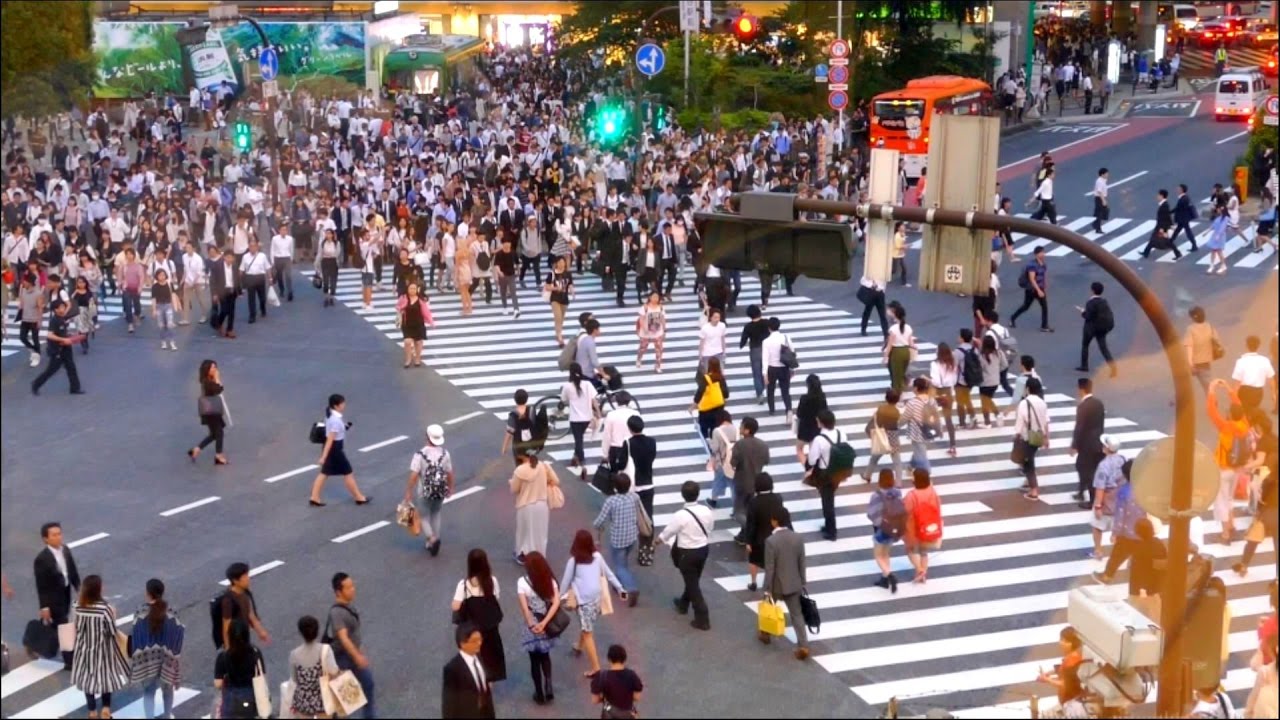
As the world’s third-largest economy after the US and China, Japan has an e-commerce industry that was worth roughly USD 5.15 trillion in 2020. This makes their e-commerce industry nearly a fifth of the size of the US e-commerce market.
Amidst all of the burgeoning markets in Asia, Japan stands out for numerous reasons: having a stable economy, consumers that have the thirst for specific types of products, and a strong desire for authentic labels. However, there are many challenges abound for businesses that lack experience in Japan, or in Asia as a whole. Businesses may have a difficult time penetrating the market and consumer culture since Japanese consumers are known to be very selective and require both high quality and excellent customer service.
In trying to break into the Japanese market, there is one search engine that you should definitely consider: Yahoo! Japan.
Why Yahoo! Japan?
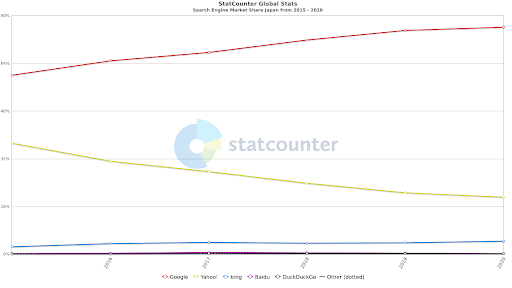
Source: https://gs.statcounter.com/search-engine-market-share/all/japan/#yearly-2015-2020
At present, Yahoo! Japan continues to control roughly one-third of the search engine market share in Japan. Failing to grasp and use Yahoo! Japan may mean missing out on at least a third of the market opportunities.
Established in 1996, Yahoo! Japan started only a year after Yahoo! was established in the United States. It began when Masayoshi Son, the CEO of a multinational telecommunications company, Softbank, invested in the development of Yahoo! in Japan.
Through the innovation and development of hardware products, the company expanded with a noteworthy increase in the number of internet users within its early years because of the default browser settings on mobile devices. However, despite having the greatest market share, Yahoo! Japan’s popularity did not last long, as many competitors began to see the opportunities in the Japanese market.
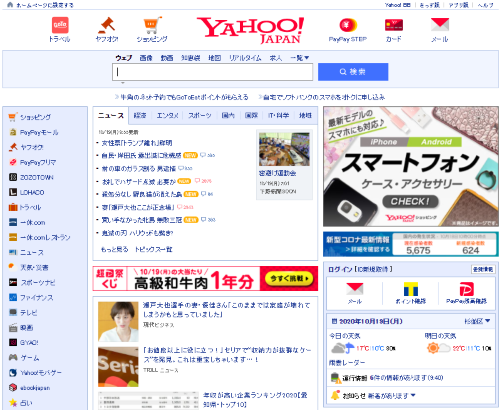
Since the arrival of Google Japan in 2000, the search engine industry has had a great impact on the internet. With its simple design yet advanced algorithm, Google has become the number one search engine in the world. Instead of being in a straightforward competition with Google’s advanced technology, Yahoo! Japan decided to implement Google algorithms in 2010 on its own search functionality, which enables users to gain more effective organic results.
Yahoo! Japan has around a 24.5billion page views per month on PC while 50 billion on mobile devices. In addition, more than 24 billion PC device Internet users in Japan are active users of Yahoo! Japan per month, and an astounding 60.5 million Japanese access Yahoo! Japan via smartphones.
Yahoo! Japan Features
SERP Rankings
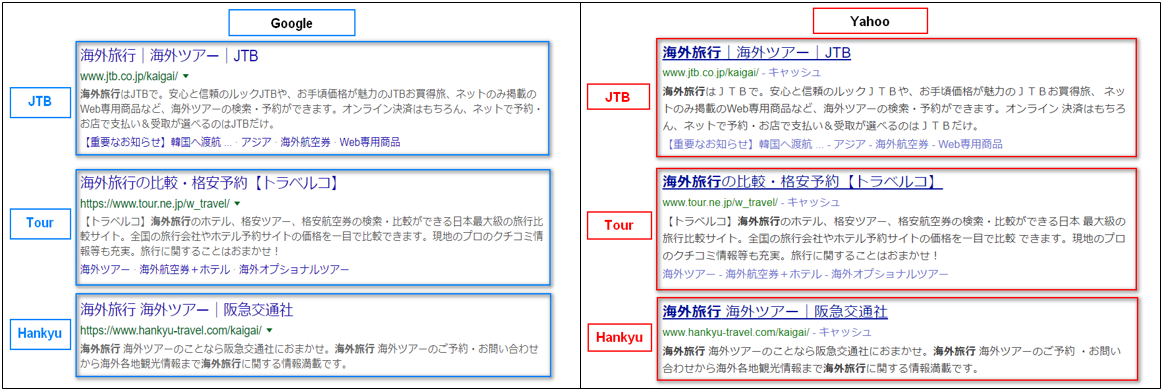
Due to the fact that both Google and Yahoo! Japan utilize the same algorithms, the listings displayed on the SERP features are mostly alike in the first few pages. For example, in this search result for the term “海外旅行” (Overseas Travels), the top three ranking pages displayed are exactly the same.
The application of Google technology on both search engines has directed the two companies into an anti-competitive market that offers users the same user experience.
SERP Structure and Design
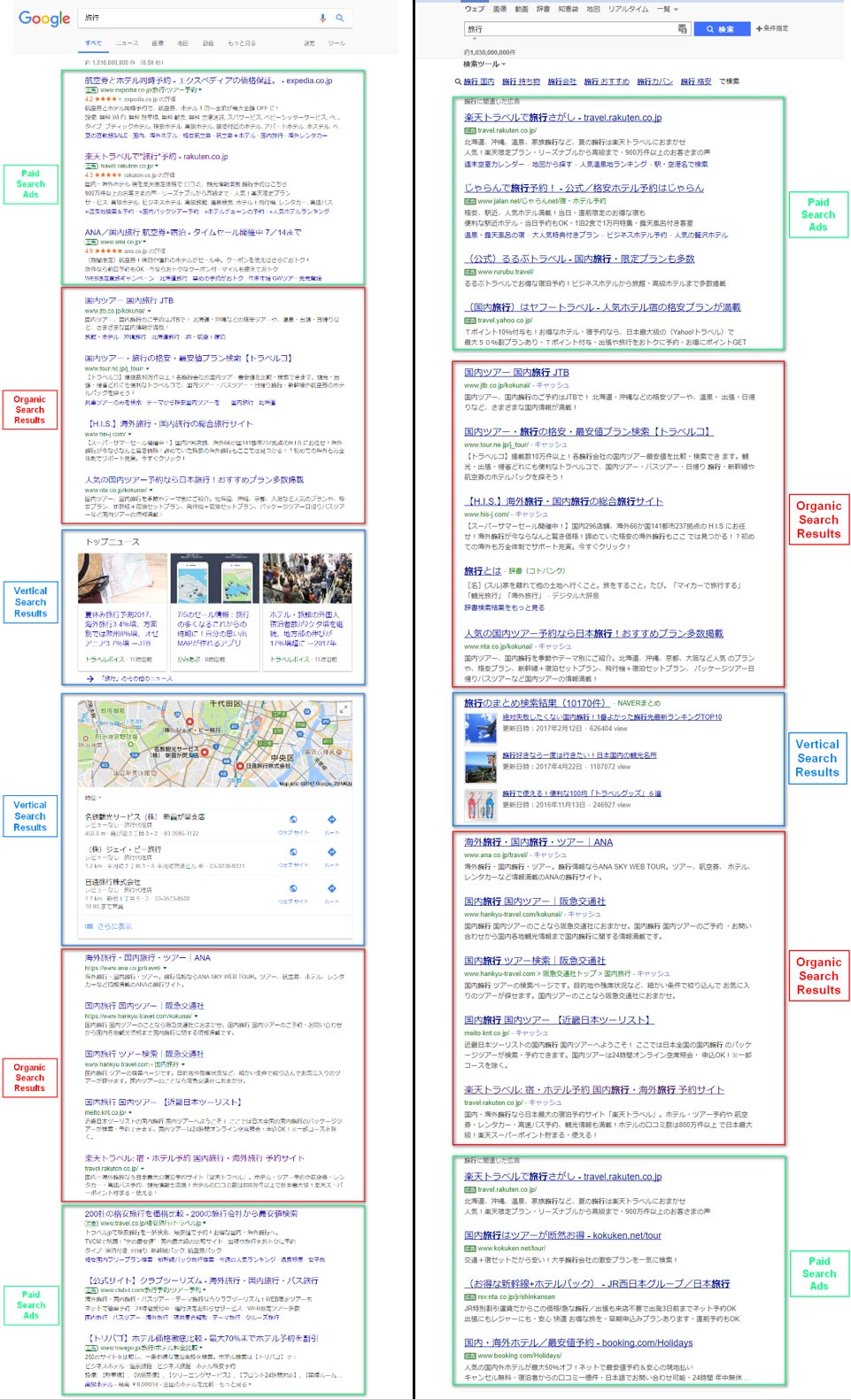
While Google provides the organic search results to Yahoo! Japan, the search results pages may seem a bit different depending on the search queries because Yahoo! Japan often adds their own unique content. That unique content provides more ways for businesses to find various opportunities for visibility in the search results.
There are 10 or less universal organic results that are displayed per page on both Google and Yahoo! Japan. This is done in order to improve user experience by making a landing page’s loading speed as fast as possible. According to the Website Load Time Statistics: Why Speed Matters in 2020 Report, pages that load within 3 seconds have a bounce rate of 9% while the bounce rate for pages that load in 5 seconds has a 38% bounce rate. Moreover, 1 out of 4 internet users will leave a website if it takes longer than 4seconds to load.
The following screenshot displays the SERP structure and design of both Google and Yahoo! Japan. The section in the red box includes the organic search results that have related or the same rankings and the section in the blue box shows the variances in vertical search results.
SERP Snippets

The basic SERPs are usually shown with a title tag in blue, landing page in green and a meta description in a simple format to provide information about the landing pages. The SERP snippet features of Google and Yahoo! Japan are identical. The search query keyword is in bold to specify the significance of the content on the page.
Sitelinks
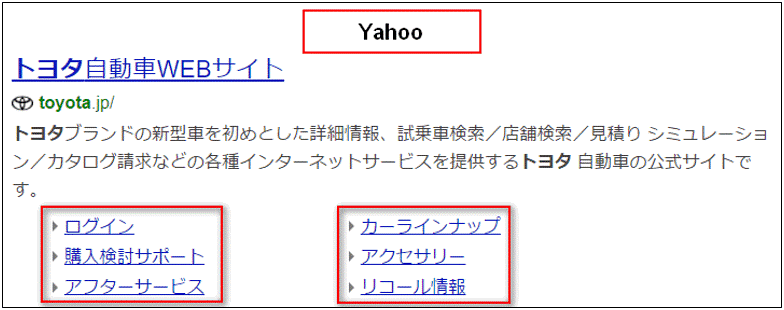
Sitelinks are an essential feature to increase traffic and conversions on a website. It gives users a more effective experience by directing them through a shorter conversion funnel. With the total area that sitelinks cover on the search results, they can also improve brand awareness and click-through rate (CTR). In the case of Yahoo! Japan, it only generates the title of the page for its sitelinks.
Knowledge Panel
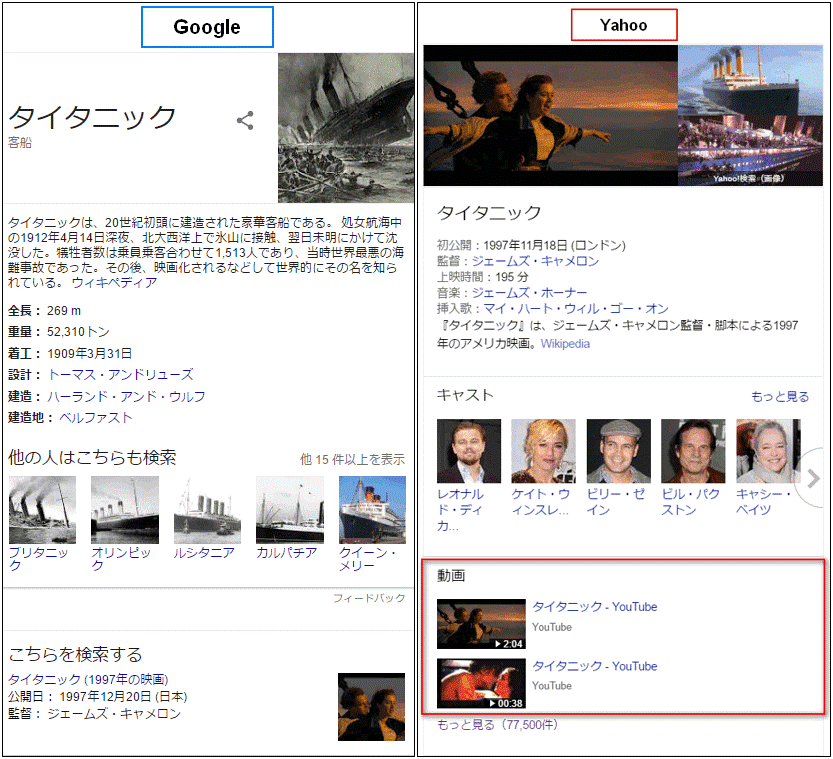
The knowledge panel displays an outline of information related to a search topic, from basic restaurant information to a summary of a movie. When searching for “Titanic” in Japanese on both platforms, Google indexes facts about the history of the famous ship that sank in 1909, videos from influential sources like Netflix, and ratings from Google users.
Advertising on Yahoo! Japan
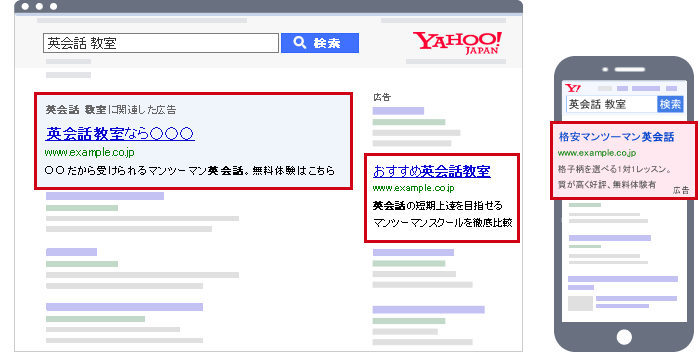
Even though Yahoo! Japan’s organic results are powered by Google, marketers need to remember that Google’s ads do not appear on Yahoo! Japan and its content. In addition, even by selecting “Japan” as a target country, Yahoo.com ads will not show up on Yahoo! Japan. The reason behind this is that these three companies are distinct and separate entities. Businesses need to set up an account with Yahoo! Japan in order for them to run the campaigns and advertise on their properties.
Some of Yahoo Japan’s marketing services include the following:
Yahoo! Japan Ads
In November 2019, Yahoo! Japan renewed its Promotional ad products into Yahoo! Japan Ads, making their marketing services accessible on a new user-friendly platform to maximize advertising performance. Furthermore, Yahoo! Japan’s ads have simplified their ads into Search Ads and Display Ads.
Also called Pay Per Click (PPC) ads, these ads trigger the user’s action. This category is divided into two types: Search ads and Display ads.

Source: https://s.yimg.jp/images/promotionalads_edit/support/pdf/YahooAds_Displayads_Auction_EN.pdf
Search Ads
These are text-based ads that are displayed to the users who search for keywords that are relevant to the ads. Advertisers can choose two ad distribution methods: All Ad Distribution and Search. The latter will only display ads on Yahoo! Japan’s search engine result pages while All Ad Distribution displays ads on both Yahoo! Japan and distribution partner sites.
Display Ads
Display Ads are delivered to users who constantly search for related terms. These ads utilize various formats such as images and videos on Yahoo! Japan’s homepage, Yahoo! JAPAN News, and more. Display Ads are divided into two categories: Display Ads Guaranteed and Display Ads Auction. Display Ads Guaranteed will be released sequentially starting Autumn 2020 while Yahoo! while Display Ads Auction is already accessible to advertisers.
Premium Ads
Premium Ads are impression-based ads using graphical or rich media units that remain in the user’s memory. These ads show up throughout the Yahoo! Japan network. Using numerous targeting methods such as area targeting, time targeting, demographic targeting and behavioral targeting, these ads are able to deliver to audiences based on location, on a specific hour or day of the week, based on specific attributes such as gender and age, as well as based on their action history within Yahoo! Japan. There are three types under this category:
- Rich Media Ad – these ads are the best option for branding purposes and for raising brand awareness. Its main product is the Brand Panel Expandable Screen that can be initiated by the user through a mouse-over. This ad provides a more powerful message in contrast to traditional ads.
- Display Ads – there is a full range of display ads available across the Yahoo! Japan network including the Brand Panel Triple Size and the Network Prime Display. The Brand Panel Triple Size ads are displayed on Yahoo! Japan and will grab the user’s attention at scale. On the other hand, Network Prime Display ads are shown across the Yahoo! Japan network and their partner sites.
- Tie-up Ads – also known as Yahoo! Japan Editorial Coverage, tie-up ads are one of best ways to improve brand awareness for a company’s products or services. With these ads, Yahoo! Japan will plan, create, and operate custom tie-up websites for advertisers, using their available big data based on the massive internet user traffic. This type of ad has two main products: Tokubetsu Kikaku and Property Tie-up. In Tokubetsu Kikaku, Yahoo! Japan creates highly effective tie-up pages for companies, enabling them to engage with their target users better. On the other hand, Property Tie-ups involve the creation of the editorial coverage for a company’s products or services on Yahoo! Japan’s websites with specialized themes, such as Yahoo! Japan Movie, Yahoo! Japan Travel, Yahoo! Japan Beauty, Yahoo! Japan Shopping, and so on.
Premium Ads will be unavailable by the end of March 2021 and replaced by Display Ads Guaranteed, which will be accessible to advertisers in January 2021.
Summary
Japan has one of the largest economies in the world. However, due to several differences in consumer culture, it can be difficult for businesses to penetrate the Japanese market. One of these differences is in the use of search engines since a third of Japan’s search engine market is controlled by Yahoo! Japan. Ignoring this search engine means missing out on a third of the market opportunities. Thus, it is important to consider Yahoo! Japan as part of your digital marketing campaign in Japan.
To get started with your Yahoo! Japan campaign, contact us at Info Cubic Japan today. We are an official Yahoo! Japan agency, and we’ll be more than happy to assist with any questions you may have.
